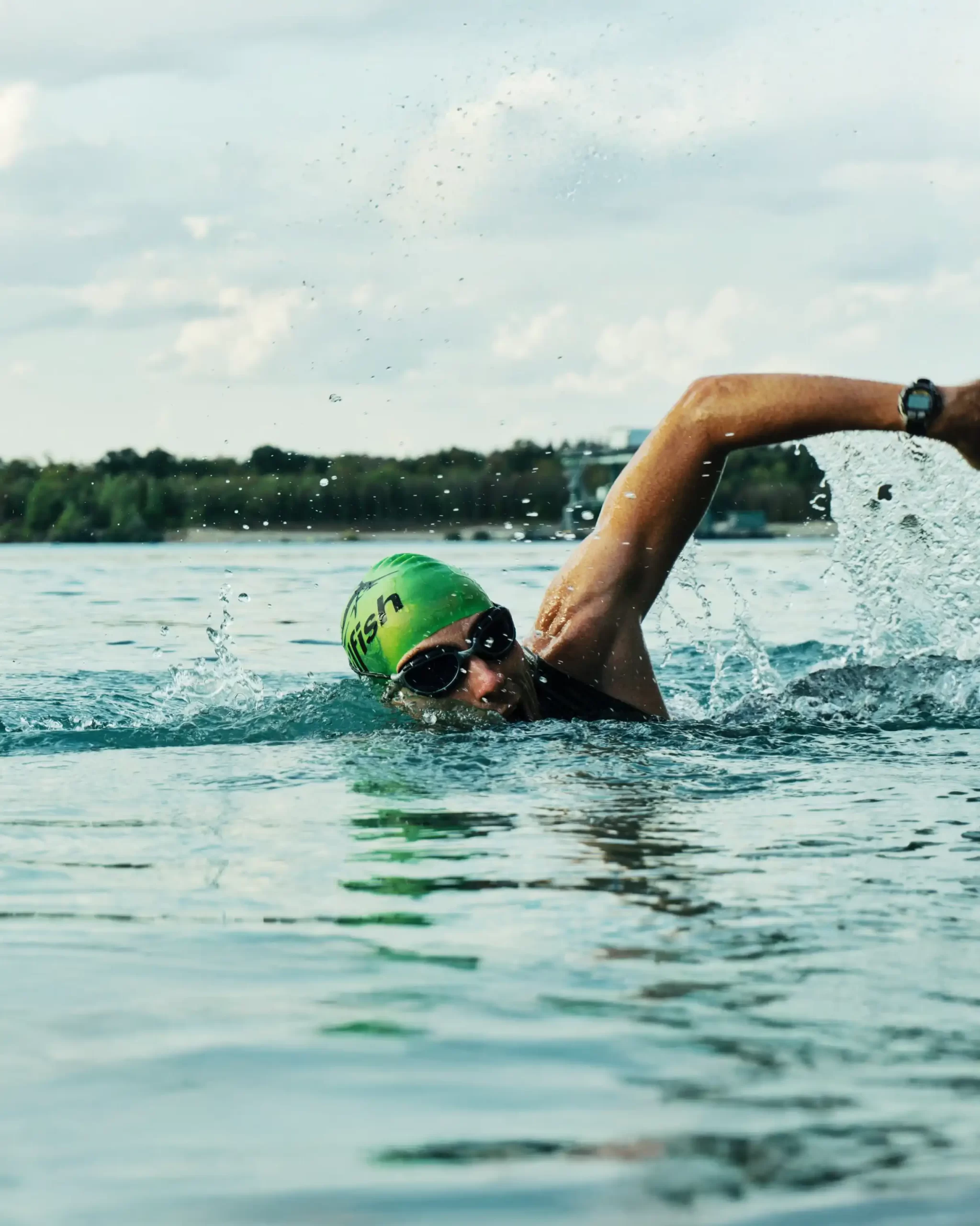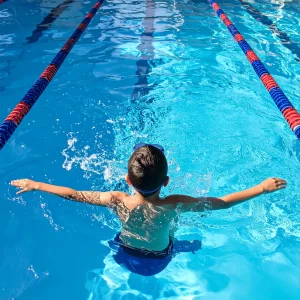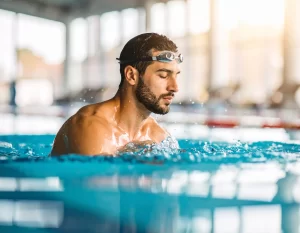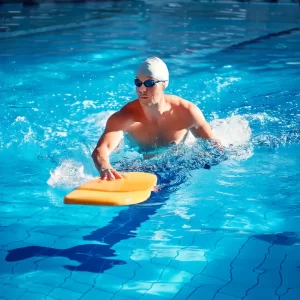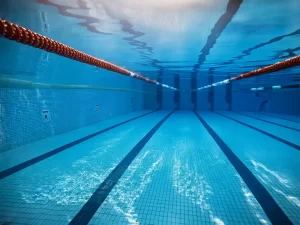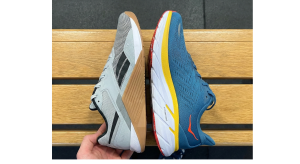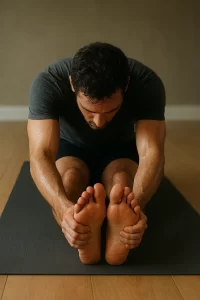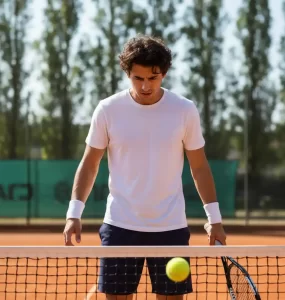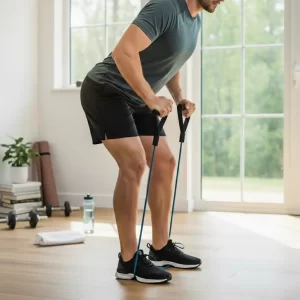START SWIMMING
Swimming is a great hobby that provides numerous physical and mental benefits. It is a low-impact form of exercise that can help you build endurance, improve cardiovascular health, and strengthen muscles.

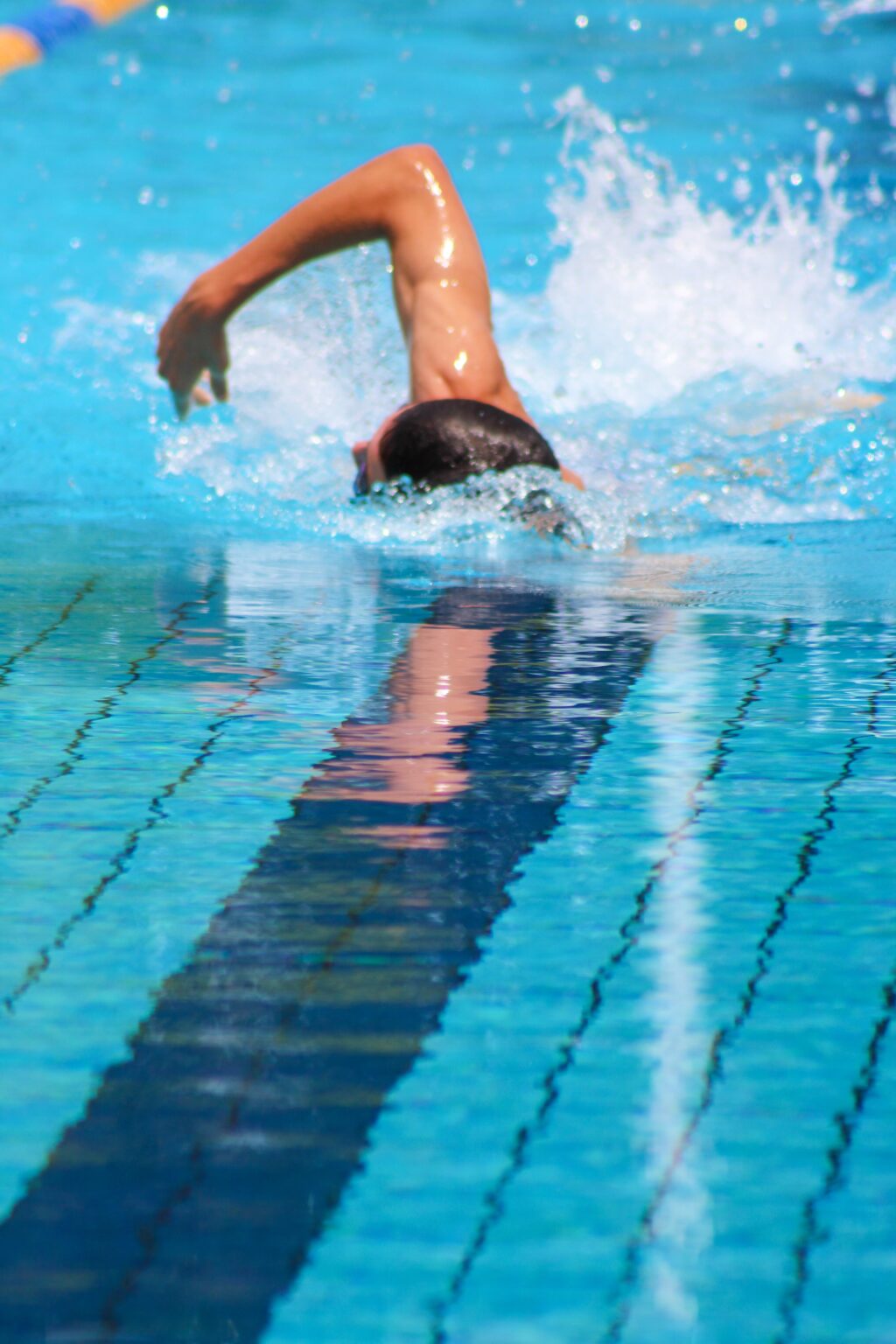
TIPS TO START
- Find a pool: The first step in starting to swim is to find a pool where you can practice and swim regularly. You can search for public pools in your area. It is preferable to start in the pool rather than the sea, as the pool offers a controlled environment and it is easier to do the exercises needed to improve your technique. Also, coaches that are around in the pool can provide beginner tips on ways to get better. Beware that swimming in the pool is more difficult than the sea due to the different density of the water.
- Get the necessary gear: In order to start swimming, you’ll need a swimsuit, goggles, and a swim cap. You may also want to consider purchasing a pair of swim fins or a kickboard to help you improve your technique and build strength.
- Learn proper technique: It’s important to learn proper technique to ensure you are swimming efficiently and effectively. Consider taking a beginner’s swimming class or working with a swim coach to learn the proper technique.
- Start slowly: If you’re new to swimming, it’s important to start slowly and build up your endurance over time. Start by swimming a few laps at a time and gradually increase the number of laps as you get more comfortable in the water. I personally used a snorkel in the beginning to improve my freestyle technique without having to worry about breathing.
Go ahead and take the plunge – the water’s waiting!
POOL RULES
If it is your first time in the pool, you should be aware of the pool’s rules that are almost universally known.
- Many pools have designated lanes for different speeds of swimmers. It’s important to use the appropriate lane for your skill level to avoid collisions and congestion. Typically, the lanes in the middle are the lanes to swim fast and are occupied by more advanced swimmers. The lanes on the side are for slower swimmers.
- When a second person enters the lane you are in, you can agree to either swim clockwise or to separate the lane on two sides and stay on the side agreed. When a third person enters, the clockwise rotation is always the way to go.
- When someone is slow in your lane, you can overtake them if you have the room to do it.
- Follow hygiene rules: Many pools require swimmers to shower before entering the pool to maintain cleanliness and prevent the spread of germs.
- Respect other swimmers: Obey the pool rules and be considerate of other swimmers by not splashing excessively or cutting in front of others.
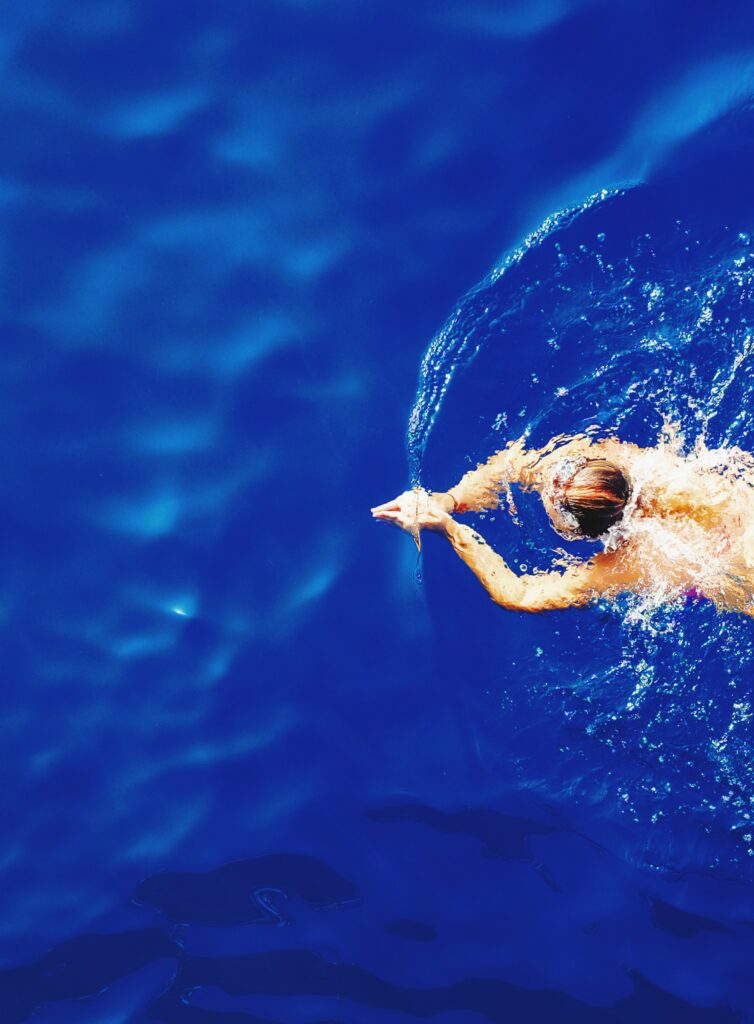
BASIC EQUIPMENT
There are several types of gear that can be helpful for swimming, including:
- Swimsuit: A swimsuit is an essential piece of gear for swimming. It is important to choose a swimsuit that fits well and is comfortable to wear.
- Goggles: Goggles can help to protect your eyes from chlorine or saltwater and can also help you to see better underwater.
- Swim cap: A swim cap can help to keep your hair out of your face and can also help to reduce drag in the water.
- Fins: Fins can be worn on the feet to help improve leg strength and to provide additional propulsion in the water.
- Kickboard: A kickboard is a flotation device that can be held onto while swimming to help improve leg strength and kick technique.
- Pull buoy: A pull buoy is a flotation device that is placed between the legs to help support the body and to allow the swimmer to focus on their arm stroke.
- Paddles: Paddles are handheld devices that can be worn on the hands to help improve arm strength and stroke technique.
- Snorkel: A snorkel is a tube-shaped device that allows the swimmer to breathe while their face is in the water. It can be helpful for training or for exploring underwater.


MAIN MUSCLES
Swimming exercises a wide variety of muscles in the body. The main muscle groups that are exercised during swimming include:
Shoulders: Swimming involves a lot of arm and shoulder movement, which helps to strengthen and tone the muscles in these areas.
Back: The back muscles, including the lats, are used to help propel the body through the water.
Chest: Swimming also works the chest muscles, including the pectoral muscles.
Core: The core muscles, including the abs and obliques, are used to help maintain proper body alignment and form while swimming.
Legs: The leg muscles, including the quadriceps, hamstrings, and glutes, are used to help kick and maintain proper body position in the water.
Overall, swimming is a full-body workout that can help to strengthen and tone various muscle groups.
COMMON INJURIES
Here are some common injuries that can occur while swimming:
- Shoulder impingement syndrome: This is a common injury among swimmers and is caused by inflammation or irritation of the tendons or bursae in the shoulder. It is often the result of overuse or improper technique.
- Swimmer’s ear: This is an infection of the outer ear canal that can be caused by water getting trapped in the ear after swimming.
- Swimmer’s shoulder: This is a term used to describe a range of overuse injuries that can affect the shoulder joint in swimmers. These injuries are often the result of repetitive strain on the shoulder joint and can include rotator cuff injuries, bursitis, and tendonitis.
- Lower back pain: Swimming can put a lot of strain on the lower back, particularly if a swimmer has poor technique or is trying to swim too much too soon.
- Knee injuries: Swimming can also put strain on the knees, particularly if a swimmer is using improper technique or has underlying issues such as arthritis or tendonitis.
It’s important to pay attention to proper technique and to listen to your body to help prevent these types of injuries. If you are experiencing pain or discomfort while swimming, it’s a good idea to speak with a medical professional or a swim coach for guidance.
